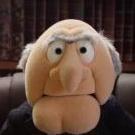M20J minimum hours to be insurable
-
Members Online
- Grumpy
- Pinecone
- Greg Ellis
- Wes Carp
- 47U
- Glen S.
- redrider54
- N201MKTurbo
- smegredy
- Patent Drew
- Will.iam
- Marc_B
- Tmooney
- Peter T
- Sabremech
- Rsmithref
- jcavazos
- mestabr
- ta2too
- 201Mooniac
- bluehighwayflyer
- SKI
- Semper Mooney
- FlyingDude
- BlueSky247
- gwav8or
- A64Pilot
- AndreiC
- Rmfriday
- mooneyflyer
- Barneyw
- CChris
- 201er


Recommended Posts
Join the conversation
You can post now and register later. If you have an account, sign in now to post with your account.